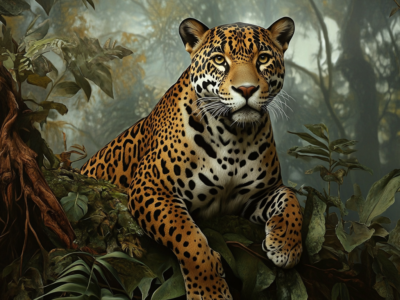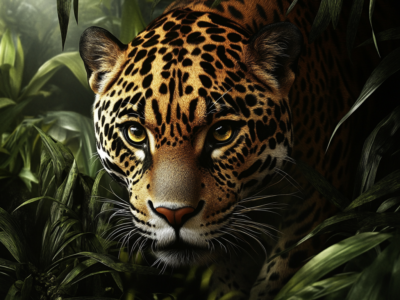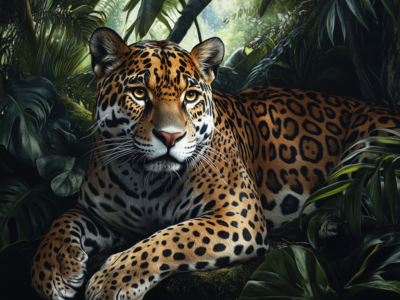A Comparison of Hearing
The animal kingdom is a fascinating realm where creatures constantly adapt their senses to survive within their environment. One of the most vital senses for these creatures is their sense of hearing. For instance, the mighty elephant, renowned across Africa for its impressive hearing ability, possesses elongated ears that enable it to detect sounds from miles away. This enhanced auditory capacity, though notably different from human’s, allows elephants to effectively communicate and establish their dominance or locate potential threats within their environment. In comparison, the solitary snake opts for a more underground approach, utilizing its keen sense of hearing to detect the vibrations in the ground left by passing prey. Interestingly, animals like the bear and the jaguar have evolved their hearing to be sharp enough to pinpoint the exact location of their prey, even in dense forest areas.
 Moreover, the feline family, including well-known predators such as the lion and the smaller, yet equally lethal, African wild cat, exhibits a remarkable sense of hearing. These predators typically hunt at night, relying on their acute night vision and hearing to ambush their prey. However, it’s their powerful sense of hearing that often plays a crucial role in determining the success of their hunts. Their ears, equipped with an elaborate network of cells and organs located at the roof of their ears, can direct sounds into the ear canal, enabling them to accurately locate their prey. Other animals in the wild, like the North American scorpion, use their elaborate sensory organs to detect minute vibrations nearby, helping them to locate their prey with precision. Animals like the jaguar and the lion, on the other hand, rely largely on their sharp teeth and strong jaws to deliver a fatal bite.
Moreover, the feline family, including well-known predators such as the lion and the smaller, yet equally lethal, African wild cat, exhibits a remarkable sense of hearing. These predators typically hunt at night, relying on their acute night vision and hearing to ambush their prey. However, it’s their powerful sense of hearing that often plays a crucial role in determining the success of their hunts. Their ears, equipped with an elaborate network of cells and organs located at the roof of their ears, can direct sounds into the ear canal, enabling them to accurately locate their prey. Other animals in the wild, like the North American scorpion, use their elaborate sensory organs to detect minute vibrations nearby, helping them to locate their prey with precision. Animals like the jaguar and the lion, on the other hand, rely largely on their sharp teeth and strong jaws to deliver a fatal bite.
Aside from predatory animals, several other species have remarkable hearing capacities that merit comparison. For example, the bird species known for their ability to hear worms underground, or canines that can hear high-frequency sounds undetectable to the human ear. Scientists have noted that the olfactory and auditory senses in these creatures often work in tandem to enhance their overall sensory perception. This keen sensory perception, coupled with physical attributes like a strong neck muscle, sharp claws, or a well-developed jaw, can make a significant difference in the life and survival of these animals in their respective habitats.
Do Jaguars Have Good Hearing?
Jaguars have insanely sharp hearing, one of their ultimate superpowers. These apex predators are built for stealth, but their ability to detect the faintest sounds in the jungle sets them apart. A jaguar’s hearing is so acute that it can pick up the rustle of leaves or the subtle movements of prey—even in dense forests where visibility is nearly zero.
Why does this matter? Because in the wild, success is all about detecting opportunities (and threats) before they detect you. Jaguars leverage their keen ears to hunt at night, capitalizing on sounds rather than sight. It’s a survival edge so finely tuned, it ensures they remain kings (and queens) of their territory. Want to learn how jaguars dominate their environment and how this compares to other big cats? Keep reading—we’re diving deeper into the world of these incredible predators.
So, do jaguars have good hearing? Absolutely, and it’s one of the key reasons they dominate their habitat as apex predators.
Male Jaguars
Male Jaguars are some of the most intriguing specimens within the species Panthera, and these mammals have unique characteristics that make them stand out among other big cats. They are well known for being factors of paramount importance within their habitats in North America, primarily due to their role as apex hunters. Their bodies are designed for this purpose, with a muscular build and large, powerful jaws. These Jaguars have an impeccable ability to swim, a trait not commonly found in other members of the big cat family. Their fur, often marked with rosettes, allows them to blend into the surrounding savannah and forest landscapes. This camouflage makes them shadow-like figures, poised to emerge from the wilderness at any moment.
 They employ an impressive collection of hunting skills in their pursuit of prey. One of these is their advanced sense of smell, which is arguably among the animal kingdom’s strongest. This sense of smell allows them to not only detect potential dinner from a distance but also to gather information about other Jaguars’ presence in their vicinity. Male Jaguars have a unique gland in their mouth roof that, when they raise their tongue, enables them to analyze the hormones contained in odor markings. These scent markings are typically left by female Jaguars on tree trunks during mating season and play a significant role in the big cat dating game.
They employ an impressive collection of hunting skills in their pursuit of prey. One of these is their advanced sense of smell, which is arguably among the animal kingdom’s strongest. This sense of smell allows them to not only detect potential dinner from a distance but also to gather information about other Jaguars’ presence in their vicinity. Male Jaguars have a unique gland in their mouth roof that, when they raise their tongue, enables them to analyze the hormones contained in odor markings. These scent markings are typically left by female Jaguars on tree trunks during mating season and play a significant role in the big cat dating game.
Just to put this extraordinary sense into perspective, let’s compare it with an elephant’s sense of smell: they can sniff out water sources from miles away and differentiate between friendly faces and potential threats. When you consider sensory abilities like this, it’s no wonder how these majestic creatures have maintained their dominance over vast territories, ensuring their continued survival and role in the ecosystem.
Conclusion
In conclusion, various factors play a role in the dynamic circle of nature. Animals drive the upward trajectory of the ecosystem, interacting and leaving their trail alongside a multitude of other organisms. Even the smallest tip of change in an animal’s behavior can signal a significant ripple in the larger ecosystem. An example of this is seen when animals climb and forage, collecting food and vital resources, contributing to biodiversity.
However, every creature, from the depths of a shadowy pit to a bird perching on the highest roof of their mouth, does not exist in isolation. They’re tethered to the entirety of the biosphere, with their lives subtly impacting other organisms and the environment. This interdependence casts a shadow of responsibility on humans to ensure the robust health of all life forms, especially considering that humans too, are part of this intricate web.
 To disregard this balance is to threaten the welfare of our own species. Thus, while the journey towards environmental harmony might seem like an uphill trail, it is an essential climb that humanity must undertake. Every act of conservation, no matter how small, brings us closer to a sustainable future. We must remember that we are not dissimilar from the animals in our ecosystem, as our actions can influence, either positively or destructively, the world around us.
To disregard this balance is to threaten the welfare of our own species. Thus, while the journey towards environmental harmony might seem like an uphill trail, it is an essential climb that humanity must undertake. Every act of conservation, no matter how small, brings us closer to a sustainable future. We must remember that we are not dissimilar from the animals in our ecosystem, as our actions can influence, either positively or destructively, the world around us.
FAQ’s:
Q1: How does vision play a role in a jaguar’s sensory mastery?
A1: Vision plays an important role in a jaguar’s sensory mastery, as they use their eyesight to spot prey and navigate their environment.
Q2: What tips can be used to help a jaguar follow a trail?
A2: To help a jaguar follow a trail, they can use their sense of smell to pick up the scent of their prey and use their eyesight to spot any tracks or other signs of the animal’s presence.
Q3: How do jaguars climb upward?
A3: Jaguars use their powerful claws to climb upward, gripping the bark of trees and other surfaces to help them ascend.
Q4: How do jaguars collect information about their environment?
A4: Jaguars collect information about their environment through their senses of vision, hearing, and smell. They use their eyes to spot prey and their ears to listen for any signs of danger. They also use their sense of smell to pick up scents from the roof of their mouth and the pit of their nose.
Q5: How do jaguars use their sense of smell?
A5: Jaguars use their sense of smell to pick up scents from the roof of their mouth and the pit of their nose. They can use this information to track prey and detect any potential threats in their environment.
Q6: How do jaguars use their sense of vision?
A6: Jaguars use their sense of vision to spot prey and detect any potential threats in their environment. They can also use their eyesight to spot any tracks or other signs of the animal’s presence.
Q7: How do jaguars use their sense of hearing?
A7: Jaguars use their sense of hearing to listen for any signs of danger. They can also use their ears to detect the presence of other animals, as they’re able to pick up on the sound of their movements.




Leave a Reply
You must be logged in to post a comment.